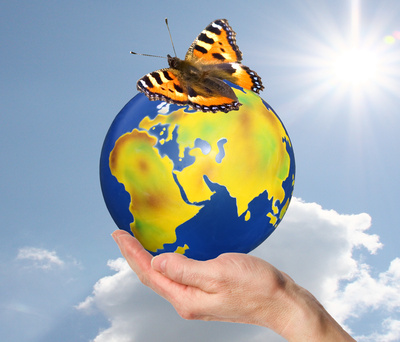But it’s not all rinsing tins and using blue bins. There are many new innovative ways people are using waste to work towards a new prosuct, rather than being discarded. Alongside leading skip hire provider Reconomy, we explore the various new tactics for dealing with the world’s waste.
EcoHelmet: Cycling to recycle
As far as waste goes, paper is up there as a top contributor. In fact, you might be surprised to hear that the amount of paper sent to landfills each year could fill an estimated 103,000 double decker buses — but EcoHelmet is making it its mission to recycle paper and put it back into better use.
Even when riding on the road and confronted with a heightened risk, 90% of cyclists don’t wear a helmet. Based in New York City, EcoHelmet offers cyclists an inexpensive way of riding by using a folding helmet that can be recycled at the end of a person’s ride. The helmet is made from 100% waterproof recycled paper and structured in a honeycomb pattern to ensure that all blows from falls or crashes are absorbed by the helmet. The beauty of the helmet is that you can fold it flat and that one size fits all.
Without losing an aesthetically pleasing look, the EcoHelmet can be made at a much lower price than a regular helmet. The helmet can be easily disposed of unlike other helmets. For example, it takes 500 years to break down styrofoam helmets and they never truly decompose!
Raising yeast and glasses: Toast Ale
Bread is the basis of most good breakfasts in Britain, and even some lunches! But a lot of it heads to the bin. Although 12 million loaves are sold on a daily basis, 44% of bread is wasted, which has presented itself as a significant contributing factor to the epidemic food waste crisis here in Britain. In a bid to end food waste, Toast Ale has partnered up with bakeries to collect unsold loaves and unused crusts from sandwich makers to craft a fine beer, while donating all profits made to environmental charities.
From its launch in 2016, Toast Ale has gone on to raise glasses all across the UK with its simple, delicious recipe. Once the bread has been delivered to the team, it is then sliced and dried in the oven at around 90°C for an hour. Then, it is crushed into the size of croutons.
After being immersed in 15.7l of 67°C water, the grains are then covered and left for around an hour. The liquid is then drained while rinsing the grains with water at a temperature of 78°C to remove any additional sugars — this should be done until you’ve reached 25l. Use around 20l of water and this will remove any tannin tastes.
The grains should be boiled and after 90 minutes, 5g of German Hallertau Tradition is mixed in to give the drink a bitter taste. This can balance the caramel notes from the bread and the papaya and mango notes from the aroma that is added later. If you’re interested in trying your own, the full recipe is available here — there’s a whole science behind it!
A cool new purpose for plastic: Wasteboards
Instead of letting plastic bottle caps find their way to the streets via litter, Dutch company Wasteboards is sending the bottle tops to the streets on a set of wheels — in the form of a skateboard. An estimated 20,000 plastic bottles are produced every second and a lot of this is ending up in our oceans leaving devastating impacts on marine life.
Teams gather plastic caps from all sorts of events and companies, then Wasteboards transforms the trash into stunning skateboard designs. Each board is made by hand and the design doesn’t shy away from what they’re made from — which is part of the appeal to its main demographic; young people who want to do their part in saving the planet.
Every wasteboard is crafted in a certain way. Bottle tops are collected from popular events across the city — or sometimes fished from Amsterdam canals by a professional plastic fishing company. After that, caps are then placed in different positions within the mould to create a basis of the design.
Each wasteboard has a pattern formed by the baking and moulding of plastic caps, which are allowed to melt however which way they please. The special baking technique used allows the bottle tops to keep their original look and characteristics. After some time to cool off, the boards are then assembled and ready to be sold.











